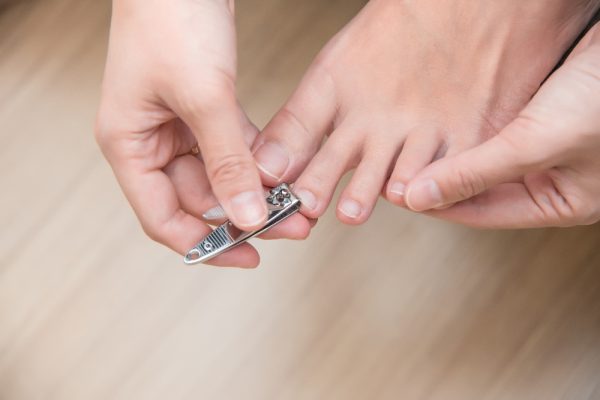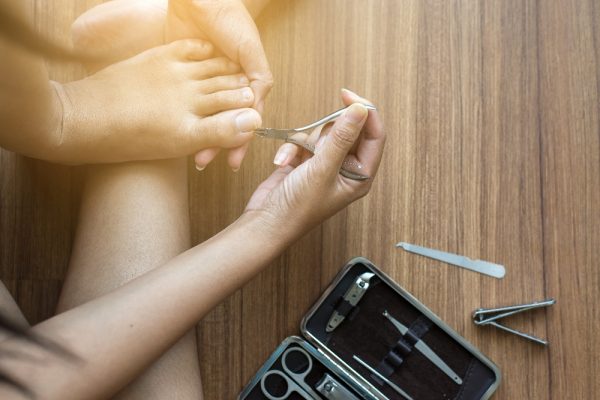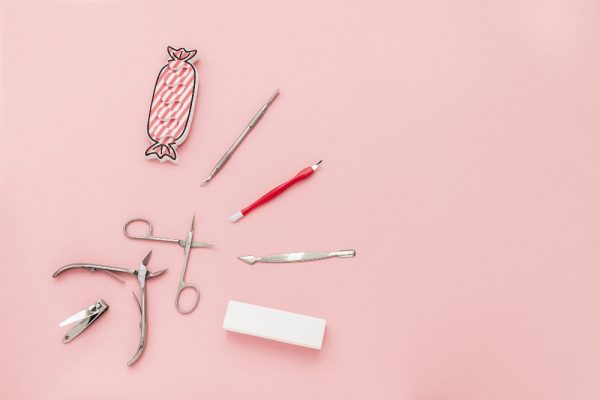Regular toenail clippings can help to prevent ingrown nails, discomfort and infection. But is there a wrong way to cut toenails? Absolutely. Especially when it comes to diabetics.
In fact, because of the special care diabetics need when it comes to foot care, it’s often best to skip the salon pedicure and clip your toenails right at home. Whether you are doing the cutting yourself or are looking for the right way to clip your loved one’s toenails, we’re here to help.
Let’s explore some of the special measures diabetics can take to properly cut toenails:

Know How Often to Cut
According to Healthline, a full fingernail can grow back completely in up to six months should you lose one. However, toenails take three times as long as fingernails to grow back, taking up to a year and a half.
At this growth rate, it’s best to trim your toenails every six to eight weeks. Too frequent of cuts can lead to unnecessary stress on your feet, while too infrequent of cuts can lead to overgrowth problems, and in severe cases, infection.
Pick the Right Clippers
Did you know that toenail clippers are different from fingernail clippers? Some people are surprised to learn that they need a different tool for each set of nails, but it’s true. Toenail clippers are generally larger, designed to make bigger trims and cut through thicker nails.

Sanitize Your Clippers
Before and after each use, sanitize your toenail clippers with rubbing alcohol and a Q-Tip. Diabetes are more prone to infection, and fungi and bacteria can transfer from clipping or foot care tools to any open wounds.
Never Clip After Bathing*
While it might seem like a smart idea to clip a diabetic’s toenails after the foot is clean from a bath, moisture actually softens the toenail. Although this makes it easier for the nail to bend, it can lead to tearing and fraying of the nail, reducing the likelihood to a clean, smooth cut.
Instead of trimming after a soak or shower, clean the toes with warm water and a gentle soap, then wipe completely dry with a cloth before cutting. (Be mindful of the water temperature, as diabetics who suffer from nerve damage may not be able to feel hot water and sear themselves. (Always test the temperature first with your hands).
*If the toenails are exceedingly thick due to a fungal infection, psoriasis, etc., soaking might be the only way to soften the nails enough to safely clip. In this case, let the toes sit in a warm water and soap mixture for 10-30 minutes (depending on the condition). Then, dry thoroughly before making small, incremental cuts to avoid splintering.

Always Make Two Cuts
Trying to cut a big toenail in one sweep often doesn’t work. The clipper is often only long enough to clip halfway through, and using your fingers to tear off the remaining unclipped portion can lead to wounds: where you rip deep into the pink part of the nail attached to the skin.
Because diabetics are much more prone to infection, always make a second clean cut to remove the nail without abrasion.
Avoid Curving in the Corners
Although a nice, rounded cut is often preferred over a square clipping, diabetics must be careful making curved clips. Cutting too far into the corners of your toenails can lead to the formation of ingrown nails, oftentimes leading to an infection.
Give the Nails a Final Filing
Even if your cuts were smooth, it doesn’t hurt to file down each nail at the end for optimal smoothness. Diabetics can have a harder time healing from a wound, and should a jagged nail snag, it could rip off part of their nail. Plus, the uneven edge could accidentally scratch their legs while sleeping.
Maintain Regular Check-ups
While examining the feet of a diabetic, always be mindful to check for wounds or foot ulcers, which are common in diabetics.
A trained podiatrist can not only trim the toenails professionally but will be diligent in spotting any other foot-related problems.
Schedule a routine check-up and toenail cutting today by visiting our contact page to make a quick appointment or give us a call at 239.936.5400.
Categorized in: Blog